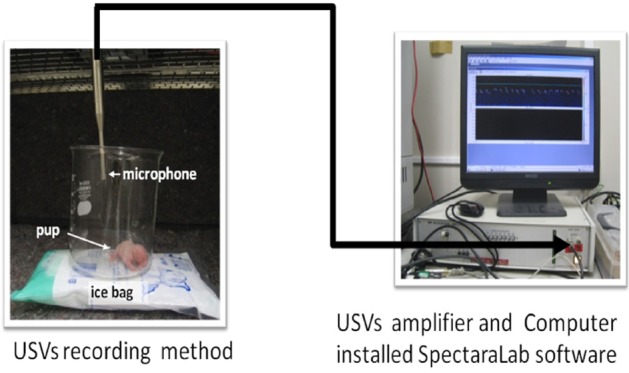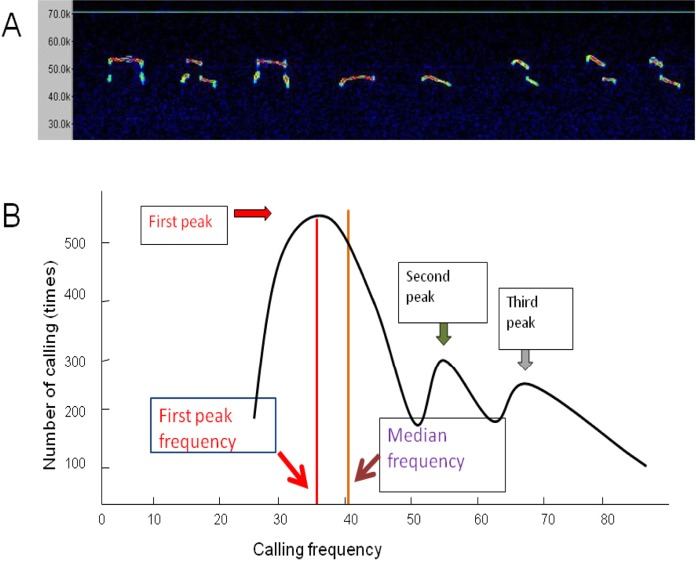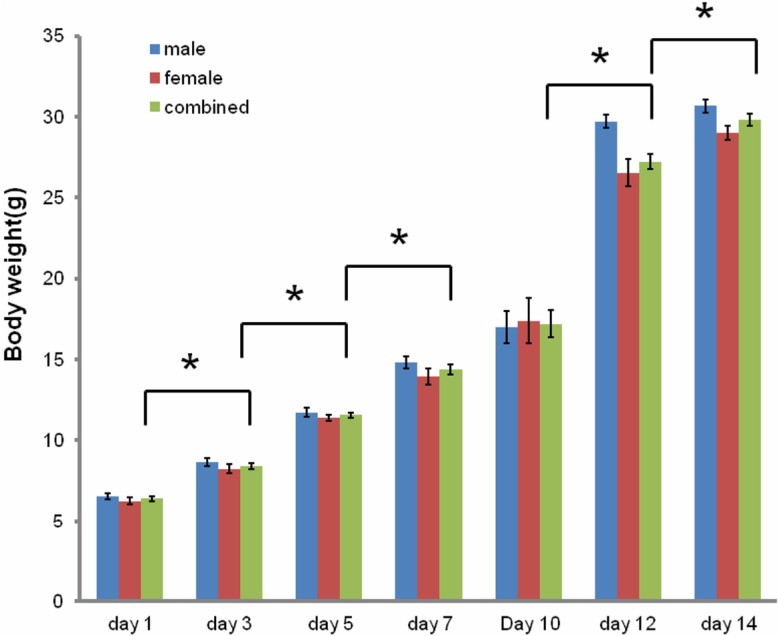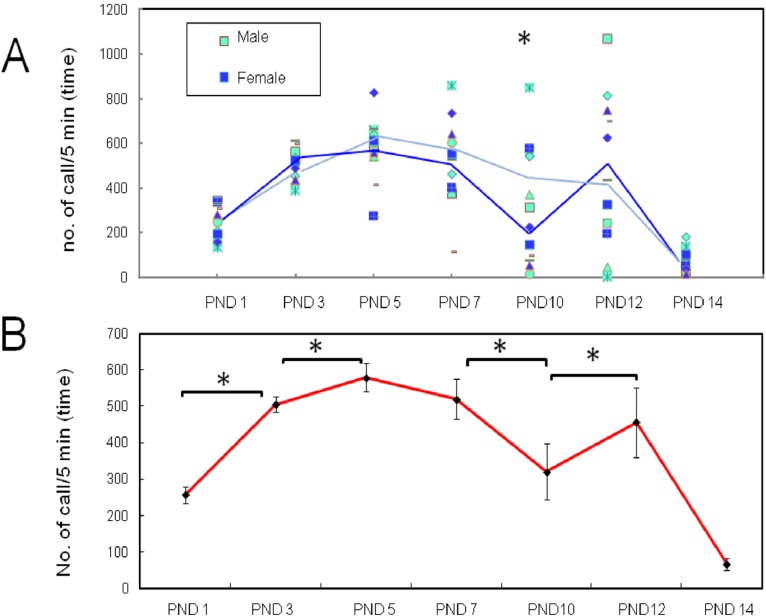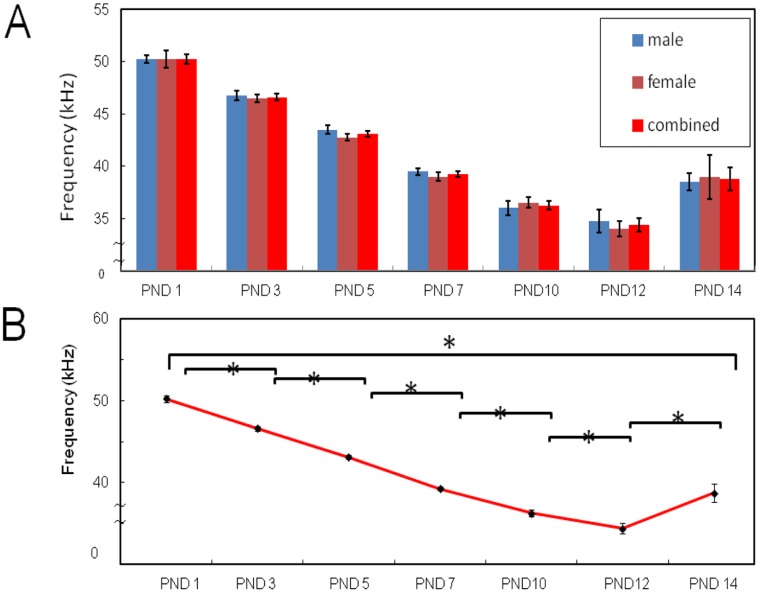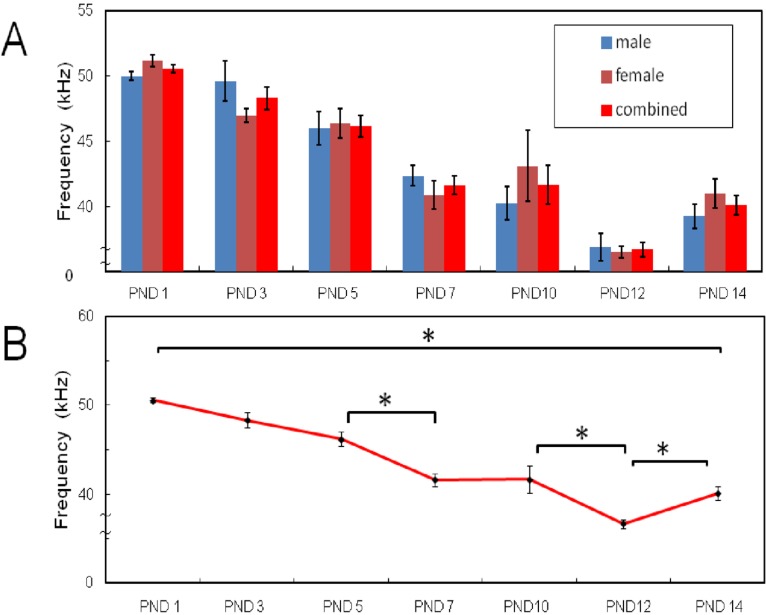Lab Anim Res.
2013 Jun;29(2):77-83. 10.5625/lar.2013.29.2.77.
Quantitative and qualitative analysis of rat pup ultrasonic vocalization sounds induced by a hypothermic stimulus
- Affiliations
-
- 1Behavioral Neuroscience Laboratory, Graduate School of Veterinary Medicine, Nippon Veterinary and Life Science University, Musashino, Tokyo, Japan. trsaito@nvlu.ac.jp
- 2Central Institute for Experimental Animals, Kawasaki, Kanagawa, Japan.
- 3Department of Laboratory Animal science, Dokkyo University School of Medicine, Mibu, Tochigi, Japan.
- 4Department of Veterinary Anatomy, College of Veterinary Medicine, Chonnam National University, Gwangju, Korea.
- 5Department of Physiology, Faculty of Veterinary Medicine, Kasetsart University, Bangkok, Thailand.
- KMID: 1431337
- DOI: http://doi.org/10.5625/lar.2013.29.2.77
Abstract
- Ultrasonic vocalizations (USVs) are essential communicative sounds used between rodent pups and their mother. Rat pups emit USVs in stressful situations, such as when they are cold or separated from the nest. We verified the ontogenetic changes in USVs emitted by infant rats isolated from their mother during the pre-weaning period. The number of calls, and the median frequency and first peak of frequency of the calls were measured at 1, 3, 5, 7, 10, 12, and 14 days postnatal age in Wistar-Imamichi rats. Pups were placed in a cold glass beaker and USVs were recorded for 5 min. The number of calls increased to a peak on day 5 and then gradually decreased. The median frequency of calls decreased slowly during the first 12 days, and then increased slightly on day 14. Similarly, the first peak frequency of calls was the highest on day 1, and then decreased gradually by day 12. A small increase was observed on day 14. These changes in frequency were correlated with the physical development of the pups, whose body weights increased significantly with age except during postnatal days 7-10.
MeSH Terms
Figure
Reference
-
1. Alberts JR. Huddling by rat pups: group behavioral mechanisms of temperature regulation and energy conservation. J Comp Physiol Psychol. 1978; 92(2):231–245. PMID: 670452.
Article2. Allin JT, Banks EM. Effects of temperature on ultrasound production by infant albino rats. Dev Psychobiol. 1971; 4(2):149–156. PMID: 5162545.
Article3. Blumberg MS, Efimova IV, Alberts JR. Ultrasonic vocalizations by rat pups: the primary importance of ambient temperature and the thermal significance of contact comfort. Dev Psychobiol. 1992; 25(4):229–250. PMID: 1624055.
Article4. Hofer MA, Shair H. Ultrasonic vocalization during social interaction and isolation in 2-week-old rats. Dev Psychobiol. 1978; 11(5):495–504. PMID: 689298.
Article5. Hofer MA, Shair H. Sensory processes in the control of isolation-induced ultrasonic vocalization by 2-week-old rats. J Comp Physiol Psychol. 1980; 94(2):271–279. PMID: 7364999.
Article6. Hofer MA, Shair HN. Isolation distress in two-week-old rats: influence of home cage, social companions, and prior experience with littermates. Dev Psychobiol. 1987; 20(4):465–476. PMID: 3609493.
Article7. Oswalt GL, Meier GW. Olfactory, thermal, and tactual influences on infantile ultrasonic vocalization in rats. Dev Psychobiol. 1975; 8(2):129–135. PMID: 1225689.
Article8. Blumberg MS, Alberts JR. Ultrasonic vocalizations by rat pups in the cold: an acoustic by-product of laryngeal braking? Behav Neurosci. 1990; 104(5):808–817. PMID: 2244987.
Article9. Blumberg MS, Sokoloff G. Dynamics of brown fat thermogenesis in week-old rats: evidence of relative stability during moderate cold exposure. Physiol Zool. 1997; 70(3):324–330. PMID: 9231406.
Article10. Ehret G, Haack B. Categorical perception of mouse pup ultrasound by lactating females. Naturwissenschaften. 1981; 68(4):208–209. PMID: 7278997.
Article11. Noirot E. Ultra-sounds in young rodents. I. Changes with age in albino mice. Anim Behav. 1966; 14(4):459–462. PMID: 5972804.
Article12. Hofer MA, Masmela JR, Brunelli SA, Shair HN. The ontogeny of maternal potentiation of the infant rats' isolation call. Dev Psychobiol. 1998; 33(3):189–201. PMID: 9810471.
Article13. Rathner JA, Owens NC, McAllen RM. Cold-activated raphéspinal neurons in rats. J Physiol. 2001; 535(Pt 3):841–854. PMID: 11559779.
Article14. Wiedenmayer CP, Goodwin GA, Barr GA. The effect of periaqueductal gray lesions on responses to age-specific threats in infant rats. Brain Res Dev Brain Res. 2000; 120(2):191–198.
Article
- Full Text Links
- Actions
-
Cited
- CITED
-
- Close
- Share
- Similar articles
-
- Effects of Neck and Back Touch on Ultrasonic Vocalization and the Rat Grimace Scale in Rats Receiving Intramuscular Injections
- Hypothermic preconditioning lowers the incidence of hypothermic arrest in neonatal rat
- Effect of hypothermic cardioplegia on cardiac protection--I. Effect of hypothermic cardioplegia on the cytosolic Ca2+ concentration in rat ventricular myocytes
- Recovery Related to Vocalization and Swallowing After Tracheostomy
- Qualitative Research in Healthcare: Data Analysis

